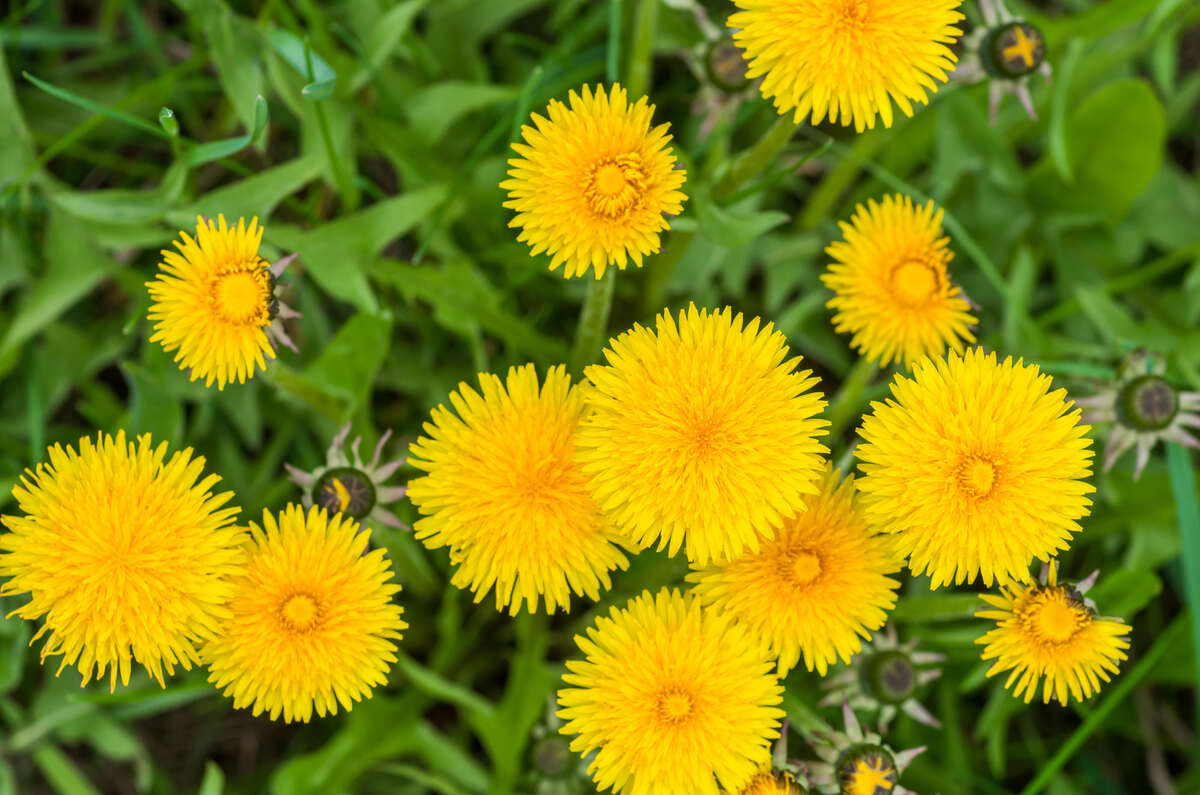
Invasive weeds, such as purslane and crabgrass, ruin the aesthetics of many California lawns. Learn how to identify common grassy and broadleaf weeds in California.
Learning what mature weeds and their young seedlings look like helps you choose the right control method and the right timing. Mechanical controls such as hand-pulling may be effective to some weeds, while chemical controls are better-suited for fully mature weeds.
Common Grass Weeds
Beautiful native plants of California can be found in many lawns across the state, but so can invasive weeds. They ruin your lawn’s aesthetics and deprive your desired plants of beneficial nutrients, sunlight, and water. Here’s a list of weeds that are on California’s most wanted list:
1. Annual Bluegrass (Poa Annua)
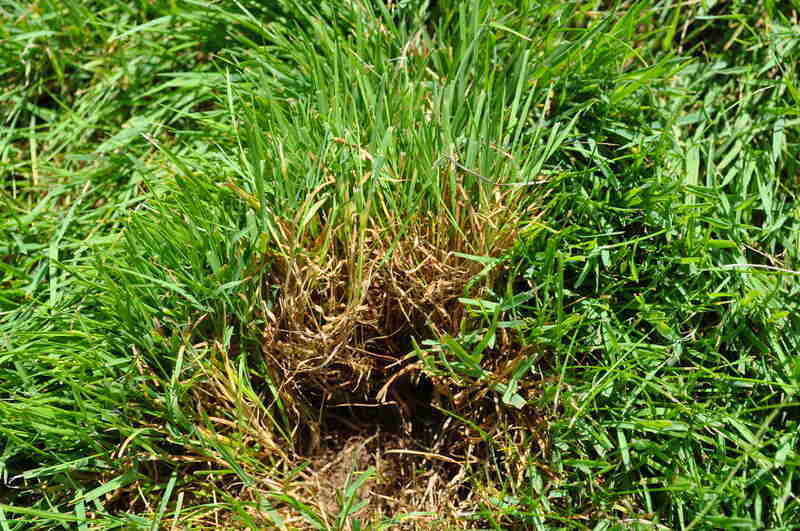
Annual bluegrass, also known as Poa, is a problematic lawn and parkway weed across the state. In contrast to perennial bluegrass, annual bluegrass grows more upright and produces more seeds. Being a cool-season grass, annual bluegrass invades your turf most severely during winter. Once a few bluegrass plants establish themselves in your turfgrass, they spread rapidly through rapid seed production.
- Life cycle: Winter annual
- Weed type: Grass
- Habitat: Humid areas, full sun to light shade
- How to identify bluegrass: It grows 6 to 8 inches high. It grows light green stems that often bend at the base. The leaf blades measure 1 to 3 inches long and are crinkled part way down. The blades are hairless and vary in color from yellowish green to dark green. Flowers are mainly between December and July. The flower head’s color is typically pale, but may also appear green or purplish.
2. Crabgrass (Digitaria)

Crabgrass grows in most parts of California, except at high elevations and areas that receive little water during summer. They grow in lawns, vegetable gardens, and ornamental landscapes.
Crabgrass’s prolific branching habit is what makes it such as undesirable weed. A single plant is capable of producing 150 to 700 tillers and up to 150,000 seeds. This is one of many reasons crabgrass is bad for lawns.
- Life cycle: Warm-season annual
- Weed type: Grass
- Habitat: Dry, hot areas at high elevations. It is often found along the lawn edges where the soil meets the pavement.
- How to identify crabgrass: Smooth crabgrass grows up to 6 inches tall when left unmowed, while tall crabgrass can grow up to 2 feet tall. The pointed leaf blades are dark green and smooth. The flowerheads have spikelike branches in one or two whorls at the stem tip.
For control details, check out our comprehensive guide on How to Remove Crabgrass.
3. Bermudagrass (Cynodon dactylon)
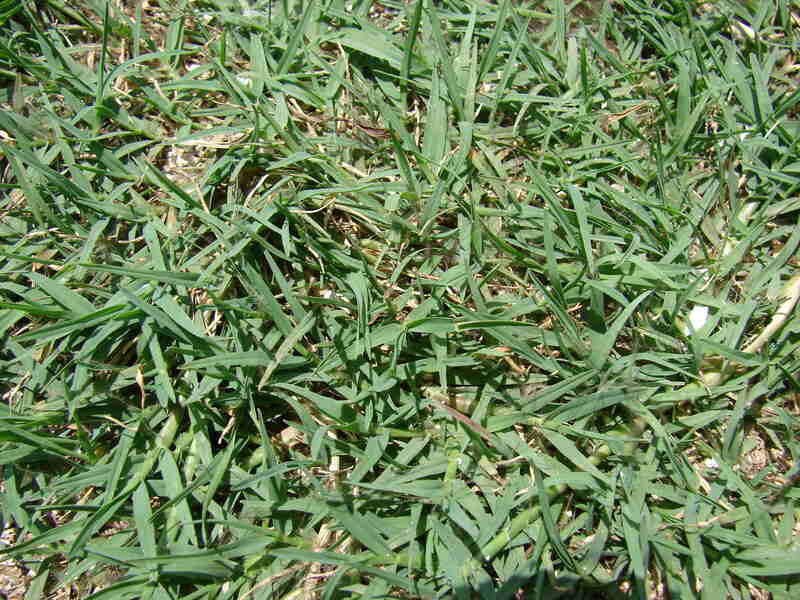
Bermudagrass is a troublesome grassy weed in many lawns and gardens. It grows throughout California with the exception of the Great Basin area. Bermudagrass reproduces by seed and horizontal stems that are located both above- and below-ground (stolons and rhizomes). This ranks bermudagrass among the toughest weeds to control.
- Life cycle: Warm-season perennial
- Weed type: Grass
- Habitat: Grows rapidly in warm temperatures and soils with high moisture levels.
- How to identify bermudagrass: Mature bermudagrass has erect stems that reach up to 1.6 feet tall, arising from runners and rhizomes. The linear leaves measure 2 to 6.3 inches long and 0.08 to 0.2 inches wide. They’re hairy on the lower surface, and slightly on the upper side. Inflorescences are located at the end of the stems, containing 3 to 9 spikes that are 1.2 to 4 inches long.
If bermudagrass gets in your garden, check out our guide on How to Keep Bermudagrass Out of Flower Beds.
Common Broadleaf Weeds
1. Dandelion (Taraxacum)
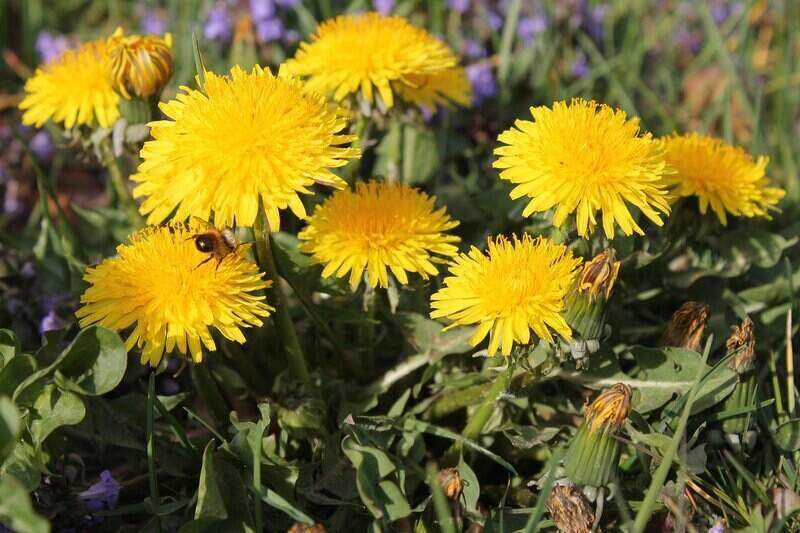
Dandelions may look pretty, but they form a dense mat of leaves (up to 14 inches in diameter) that crowd out desirable plants and reduce your tufgrass’s vigor. Seeding germination occurs in late spring to early summer, or May to June. Dandelion’s color and texture is different from your grass’s, so the mismatch can ruin your lawn’s aesthetic quality. Flowers produced by dandelions are known to attract bees, causing problems to your kids or loved ones with bee allergies.
- Life cycle: Warm-season perennial
- Weed type: Broadleaf
- Habitat: Grows best in moist areas and full sun. Once established, it can survive some shade and dry conditions.
- How to identify dandelions: Dandelion leaves grow 2 to 12 inches long and a quarter as wide, either hairless or sparsely hairy. The bright yellow flower heads measure 0.8 inches to 1.25 inches across and are found on leafless stalks that are 3 to 12 inches tall. The strong and deep taproot exudes a milky substance when cut and feels gluey at the touch.
For control methods, check out our guide on How to Get Rid of Dandelions.
2. Common Chickweed (Stellaria media)
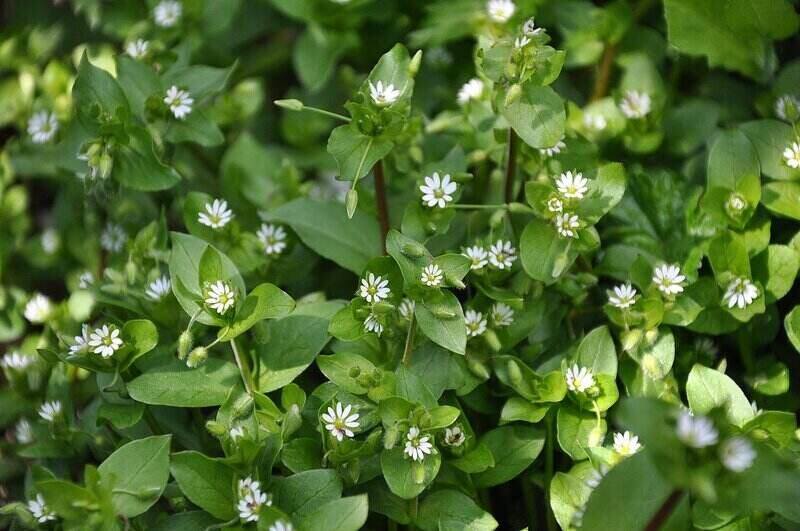
Common chickweed is a succulent annual that grows up to 6 inches tall and forms a dense mat, ruining your lawn’s aesthetics. Chickweed seeds germinate from January to early March when soil temperature ranges from 54 to 68 degrees Fahrenheit. This weed is often found in well-watered areas, which is how overwatering your lawn can encourage its growth.
- Life cycle: Warm-season annual
- Weed type: Broadleaf
- Habitat: Cool, moist, and shaded areas of your lawn. It can also be found under trees and shrubs.
- How to identify chickweed: It grows near the surface and has slender stems that measure up to 20 inches long. The leaves are pointed and can measure up to 1.5 inches long. Chickweed produces white flowers with 5 petals that are 0.25 inches wide, with each flower separated like rabbit ears. Fruits are small, shaped like an egg, and contain numerous seeds.
3. White Clover (Trifolium repens)
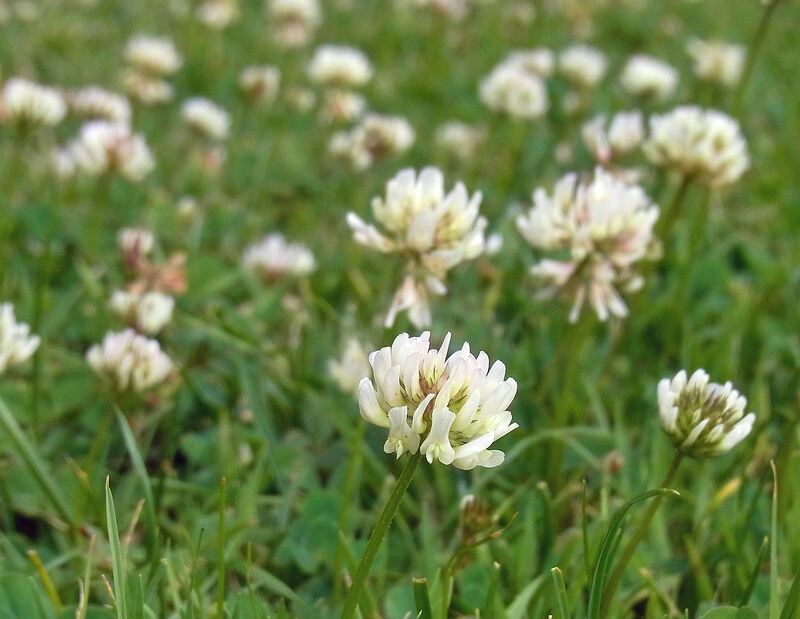
White clovers reduce your lawn’s uniformity due to their different color, texture, and growth rate. Once fully established, the clover blooms will attract bees that may sting you or your loved ones when using the turfgrass. Overall, white clovers are non-desirable weeds that ruin your lawn’s aesthetics and attract stinging insects.
- Life cycle: Behaves as a biennial in cold climates and as an annual in warm climates.
- Weed Type: Broadleaf
- Habitat: Humid, irrigated areas in clay or silt soils
- How to identify white clover: White clovers have branching stems that grow anywhere from 4 to 12 inches long and creep along your soil’s surface. The leaves consist of 3 hairless leaflets, with each leaflet measuring 0.25 to 0.5 inches long. White clover typically blooms from March through December. It produces egg-shaped flower heads with tiny, pinkish-white flowers.
For control methods, check out How to Get Rid of Clover and Not Kill Grass.
4. Common Purslane (Portulaca oleracea)
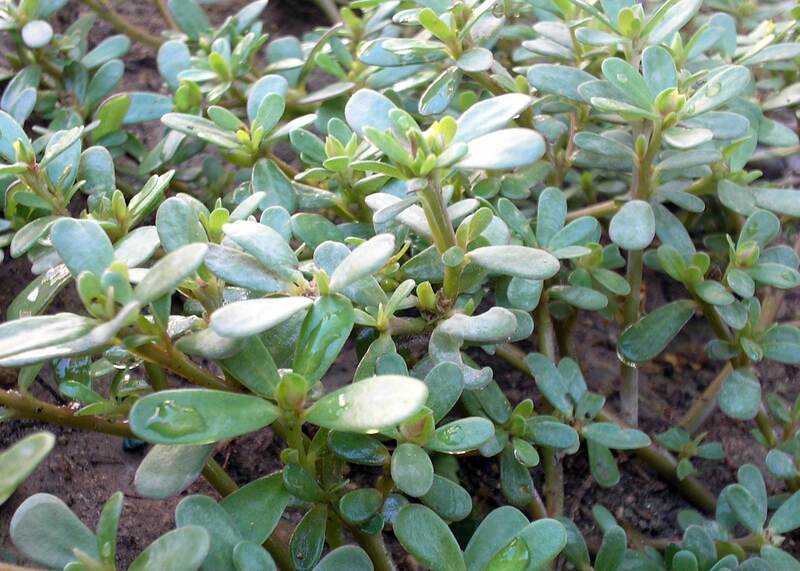
Common purslane isn’t your average weed. It can produce a large number of seeds and rapidly colonize a warm, moist soil. It forms dense mats that utilize available moisture and prevent light from reaching your soil’s surface. This prevents the emergence of other seedlings, including your desired turfgrass.
- Life cycle: Warm-season annual
- Weed type: Broadleaf
- Habitat: Full sun, fertile and sandy soils
- How to identify common purslane: A mature purslane plant grows up to 3.3 feet long. Starting from the base, this weed has many succulent branches. The leaves are often egg-shaped with red-tinged edges, measuring between 0.5 and 1.2 inches long. They are arranged along the stem, mainly opposite one another. The flowers are yellow and usually have 5 petals, opening on sunny days from mid-morning to early afternoon.
5. Creeping Woodsorrel (Oxalis corniculata)
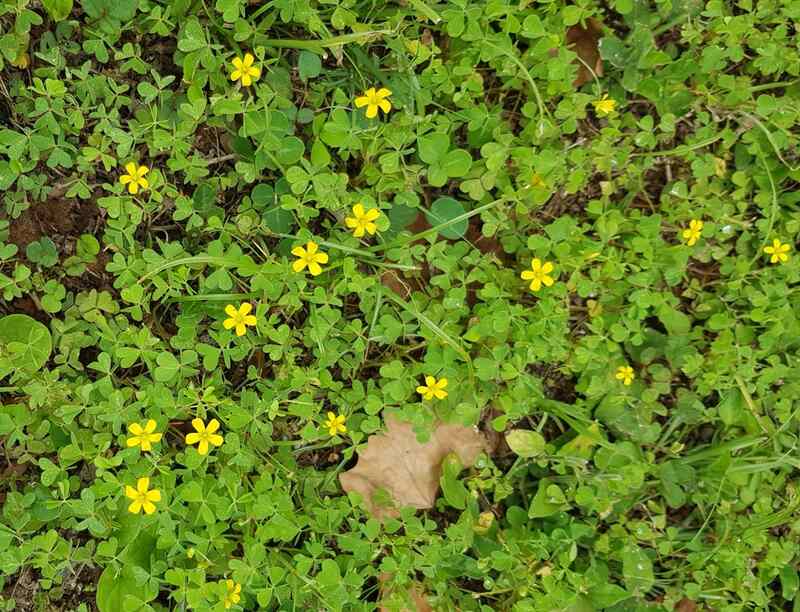
Creeping woodsorrel establishes rapidly in semi-shaded turfgrass areas or perennial groundcovers. It is a very competitive weed that grows year-round, making it troublesome in warm-season turfs and groundcovers with dormancy periods. In California, this plant establishes mainly in the fall. Creeping woodsorrel grows rapidly and forms a taproot with extensive root systems that expand outward.
- Life cycle: Perennial
- Weed type: Broadleaf
- Habitat: Partial shade, well-drained and fertile soil
- How to identify creeping woodsorrel: Mature plants have creeping, above-ground stems that grow about 12 inches long. The color of the leaves ranges from green to dark purple, and consist of three heart-shaped leaflets that measure up to 0.4 inches long and 1 inch wide (though the leaves look similar, they’re different from clover). Creeping woodsorrel produces flowers that are present almost all year round. They form clusters with 5 petals.
6. Common Groundsel (Senecio vulgaris)

Common groundsel produces a large number of seeds that spread rapidly to produce an unattractive infestation, more than 25,000 seeds per plant under optimal growing conditions. This weed can out-compete newly planted seedlings, but has less negative impact on well-established plants or grasses. The biggest danger of this weed is directed towards livestock by causing liver poisoning.
- Life cycle: Winter annual
- Weed type: Broadleaf
- Habitat: Grows best in moist and fertile soil.
- How to identify common groundsel: A mature common groundsel plant grows up to 2 feet tall. The leaves are either hairless or covered with cotton-like hairs, deeply lobed with toothed edges and spaced evenly on the stems. The upper leaves are attached directly to the plant’s stem and are larger than the lower leaves. Yellow flowers, which bloom nearly year-round, cluster into flower heads at the tip of the flowering stem.
FAQ About Common California Weeds
What are the purple-colored weeds called?
They’re called the purple star thistle. They are native to Europe and threaten the ones that are native to California. Controlling this weed is one of the top priorities of the Department of Agriculture.
Are California poppies classified as weeds?
In some regions across the US, yes. Since they’ve been agriculturally transported to different states, they are treated as invasive weeds.
Are flame weeders effective at eliminating weeds?
Flame weeders do not get rid of the weeds’ root systems, so they’re often regarded as a short-term solution for annual weeds. Many perennial are aggressive spreaders, so burning the top part and neglecting the roots won’t do your lawn any good. Here’s an in-depth look at how to get rid of stubborn weeds in your grass.
Is there a weed herbicide that is banned in California?
Yes, paraquat is a toxic weed killer that has recently been banned in California. This is mainly due to its links to Parkinson’s disease.
Hire a Pro to Oversee Weed Control
Mechanical controls like hand-pulling can be tiresome, especially if you’re dealing with a large weed invasion. On top of that, improper pulling or cutting can result in more seeds spreading across your turf. Those seeds will germinate into new plants, keeping you from enjoying your desired turfgrass.
However, weeds won’t thrive if your lawn is properly maintained. Hire a local lawn care professional to mow your lawn and identify young weeds before they mature and ruin your turf’s aesthetics.
Main Image Credit: tomeyk / Adobe Stock Free / License